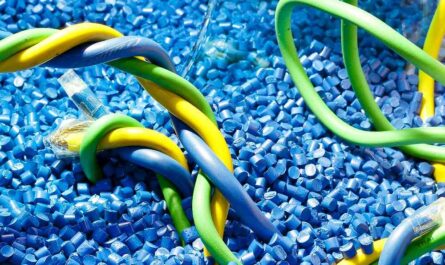What are Polypropylene Compounds?
Polypropylene compounds are polymeric materials made from polypropylene plastic combined with additives to enhance certain properties or behaviors. Polypropylene (PP) is a lightweight, flexible thermoplastic that is widely used due to its low cost and desirable physical characteristics. By blending it with other polymers, fillers, plasticizers and additives, engineers can finely tune polypropylene compounds for specialized purposes.
Properties and Characteristics of Polypropylene
As a base material, pure polypropylene has a few innate properties that make it an excellent candidate for compounding. It is partially crystalline and semi-rigid, providing moderate strength and stiffness. PP has very low density at around 0.90 g/cm3, yielding parts that are significantly lighter than alternatives like polyethylene terephthalate (PET). The material’s melting point ranges from 130 to 171°C, allowing it to be easily processed via extrusion, injection molding and other thermoforming techniques. Polypropylene is also highly resistant to chemicals, oils and solvents, excluding strong acids and oxidizing agents.
Impact Modifiers for Polypropylene Compounds
One common additive is impact modifiers, which are rubber or elastomer particles blended into polypropylene to improve its toughness and impact strength. At low temperatures, pure PP becomes rather brittle. Impact modifiers act as stress absorbers that prevent cracks from propagating when the material flexes or experiences point loads. Common impact modifiers for PP include ethylene-propylene rubber (EPR), ethylene-propylene-diene monomer rubber (EPDM) and ethylene-vinyl acetate (EVA).
Fillers in Polypropylene Formulations
Inorganic fillers are extensively used to reinforce Polypropylene Compounds economically while enhancing properties. Calcium carbonate, talc and clay are popular choices that can boost rigidity, heat deflection temperature and moisture/gas barrier effects. Glass fibers are valuable fillers that greatly increase the flexural and tensile strengths of PP when aligned in the direction of stress. Carbon fibers offer a similar benefit but at a much higher cost. Short fiber fillers like wood or inorganic materials provide multidirectional reinforcement.
Plasticizers in Flexible Polypropylene
Plasticizing agents are often blended into polypropylene to make it softer, more flexible and pliable. These include low molecular weight polypropylene, mineral or vegetable oils, and synthetic plasticizers like toluene or dioctyl phthalate. By lowering the material’s glass transition temperature (Tg), plasticizers permit greater elongation and impact absorption in rubbery thermoplastic (TPO) formulations. They find use in non-rigid tubing, film, flooring and adhesive applications. However, plasticizers can potentially bleed or evaporate over time.
Antioxidants for Polypropylene Thermal Stability
When heated during processing or in long-term use, polypropylene is prone to oxidation that causes polymer chains to break down. This raises the material’s melt viscosity and leads to embrittlement. Antioxidants are commonly included in polypropylene compounds to prevent thermo-oxidative degradation. Common antioxidants are hindered phenols, phosphites and blends that protect PP by neutralizing free radicals formed during oxidation reactions. Their addition allows the material to retain mechanical properties for a longer lifespan at elevated temperatures.
Flame Retardants for Safety-Critical Applications
For applications where fire safety is imperative, specialized PP compounds contain organic or inorganic flame retardants. These work by forming a protective char layer when exposed to heat or open flames. Common halogenated flame retardants like decabromodiphenyl ether (DecaBDE), and non-halogen systems based on aluminum trihydroxide, magnesium hydroxide or red phosphorus can significantly boost the material’s fire resistance as determined by applicable standards like UL94.
Applications of PP Compounds
Thanks to their versatility and tunable properties through compounding, polypropylene plastics find diverse roles across many industries. Some major applications include:
– Automotive – Interior panels, consoles, fluid tanks, bumper cores, instrument panels
– Consumer goods – Appliance parts, housewares, crates, pallets
– Industrial – Pipe fittings, valves, geotextiles, luggage, furniture
– Medical – Catheters, blood filters, containers, stopcocks
– Electrical – Connectors, bobbins, switch housings, cable wrapping
– Construction – Window frames, roofing membranes, insulation boards
– Packaging – Food packaging, containers, bottles, caps and closures
Summary
By tailoring the composition of polypropylene compounds, engineers have unlocked a highly functional thermoplastic suited to an extraordinary range of demanding applications. The core benefits of PP such as lightweight strength, toughness, chemical resistance and low cost – combined with its ease of processing – make it nearly ubiquitous. Advances in compounding technologies continue broadening polypropylene’s uses across industries seeking high performance yet affordable solutions.




